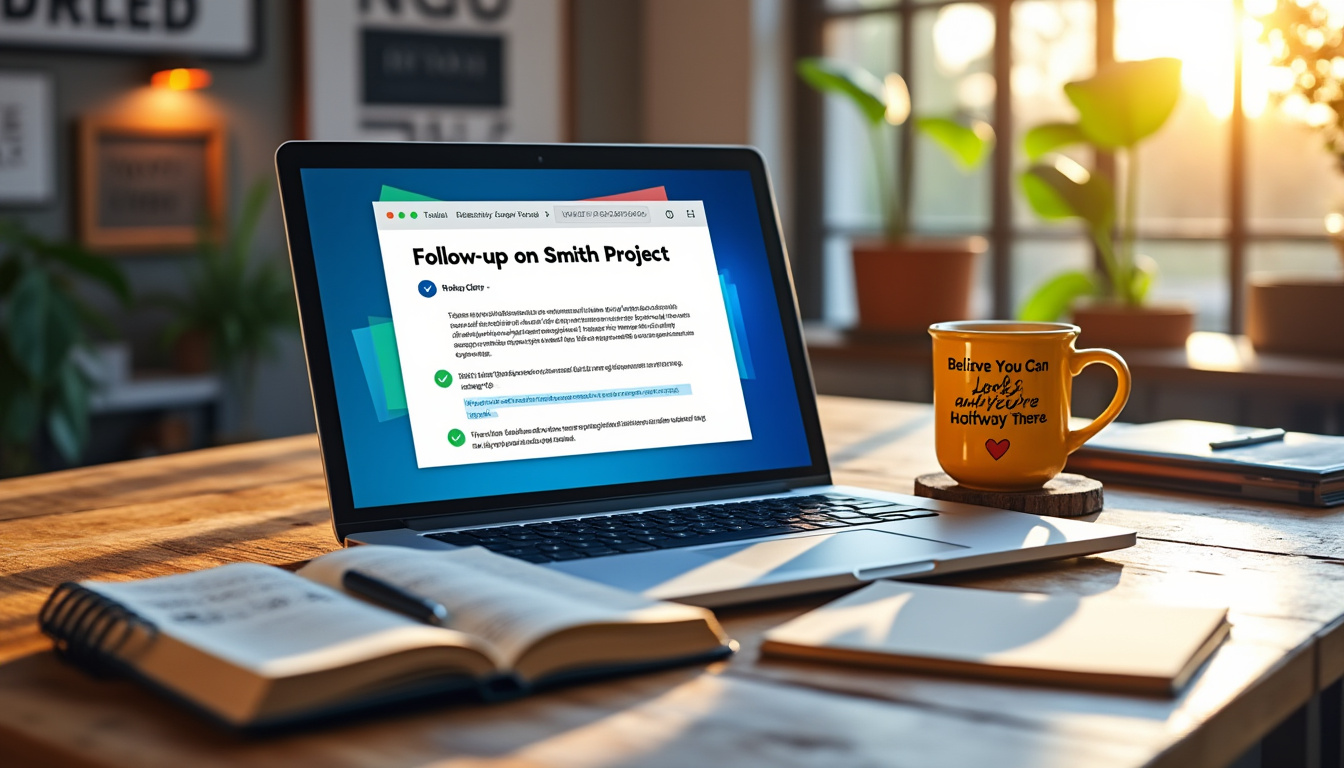In the current competitive landscape, achieving excellence has become a prerequisite for any organization wishing to thrive. Whether one is a product manager at Danone, a marketing director at L’Oréal, or a salesperson at Renault, optimizing results is non-negotiable. The challenge lies in skillfully combining quantitative and qualitative goals—a delicate yet vital balance that can determine success. This article delves into the intricacies of efficiently integrating these two dimensions into your operational strategy.
Understanding the Fundamentals of Quantitative and Qualitative Goals
To accurately evaluate a company’s performance, it is crucial to grasp the distinctions between quantitative and qualitative goals. Quantitative goals hinge on precise numerical data, such as revenue figures or growth rates. Conversely, qualitative goals pertain to more subjective aspects, including customer satisfaction or service quality. Recognizing this contrast is essential, as quantitative goals provide clear indicators, while qualitative goals enrich understanding by unveiling the motivations behind the data.
Defining and Implementing Quantitative Objectives
Establishing a quantitative objective translates to setting a measurable target, for example, “increase revenue by 20% by year-end.” To facilitate this, key performance indicators (KPIs) must be instituted. These metrics are especially vital for sales teams to monitor the number of appointments or the conversion rate of leads.
An essential step in defining these objectives is conducting a thorough diagnosis of the current situation. This entails:
- Analyzing past performance
- Identifying market trends
- Evaluating the company’s strengths and weaknesses
By integrating these insights, an organization can formulate objectives that are not only ambitious but also attainable, thereby fostering a motivating work environment.
Challenges Associated with Quantitative Goals
Despite their importance, quantitative goals can present challenges. An excessive focus on numbers may lead to overlooking critical elements, such as employee well-being or customer satisfaction. This obsession with data can create undue pressure within teams, which can harm morale and overall engagement.
Thus, it is critical to adopt an approach that balances the analysis of the motivations behind the numbers with the pursuit of the objectives themselves. In terms of performance, comprehending the “why” behind the figures is as crucial as achieving those objectives.
Focusing on Qualitative Objectives
Qualitative objectives center on feelings, opinions, and impressions. Their strength lies in their ability to highlight barriers to performance or potential areas for improvement. Several methods can be employed to successfully deploy these goals.
Strategies for Establishing Qualitative Goals
One of the most effective methods for defining qualitative goals is through focus groups. By gathering experiential feedback, you can pinpoint your clientele’s needs and desires, facilitating necessary adjustments to your offerings.
Another valuable approach involves conducting one-on-one interviews to obtain deeper, more specific qualitative insights. As an example, a qualitative objective could be, “Enhance customer satisfaction to 90% by year-end.” While this data may remain subjective, it can lead to significant long-term improvements.
Limitations of Qualitative Goals
It is also important to acknowledge the limitations associated with qualitative objectives. These goals are often highly interpretive, which may call their validity into question. The data collection process for qualitative information can also be more time-consuming than for quantitative data, posing a management challenge for already stretched teams.
However, do not allow these constraints to deter you. Gaining a deeper understanding of customer behavior and fostering continual improvement of offerings are widely compensated by the long-term benefits of this approach.
Combination of Quantitative and Qualitative Goals for an Effective Strategy
Integrating both types of goals yields undeniable benefits. By embedding quantitative objectives within a qualitative framework, organizations create a comprehensive overview that enables effective market navigation. By merging numerical performance indicators with customer satisfaction surveys, for instance, informed decisions become feasible.
Concrete Examples of Integration
To illustrate this integration, consider the launch of a new product at Carrefour. The company could set sales objectives for the new item while also conducting satisfaction surveys regarding their marketing campaign. This combination of objectives facilitates informed decisions and the ability to adjust strategies in real-time.
| Type of Objective | Example | Measurement Method |
|---|---|---|
| Quantitative | Sell 10,000 units of the new product | Sales figures |
| Qualitative | Achieve 85% customer satisfaction | Satisfaction surveys |
Continuous Evaluation and Strategic Adjustments
For a strategy based on the combination of quantitative and qualitative goals to be effective, it must include regular evaluations. This involves measuring progress and comparing results with initial expectations. Careful monitoring of these indicators allows for timely adjustments, encourages experimentation with new methods, and refines business processes.
Remaining attentive to customer feedback and team inputs also supports this approach, enabling not just strategy adjustments but also providing opportunities to learn and evolve in a constantly changing market environment, whether it involves companies like Bouygues, Orange, or TotalEnergies.
The Strategic Impact of Combining Quality and Quantity
The strategy of merging qualitative and quantitative goals should align with a company’s overarching vision. This synergy can elevate a mere performance initiative into a winning strategy. For instance, focusing on the quality of customer relationships and the impressions left, as demonstrated by Air France, could make a significant long-term difference.
Challenges to Overcome
Defining objectives, though it may seem straightforward, can be a significant hurdle. Precisely establishing qualitative goals can lead to varied interpretations. It becomes crucial for teams to visualize how these goals connect with their daily tasks, necessitating transparent communication.
- Assess the subjectivity of qualitative goals.
- Ensure a connection between objectives and team actions.
- Encourage an environment of open feedback.
The Role of Leadership in Execution
Leadership plays a critical role in setting and monitoring objectives. Continuous support from leaders can enhance team commitment to achieving established goals. This requires creating a collaborative framework where every member feels engaged in the collective success, mobilizing joint efforts. A proactive management approach, similar to what SNCF has adopted for its customer service, illustrates a path forward.
The Power of Feedback
It is essential not to underestimate the impact of feedback within a corporate strategy. Implementing satisfaction surveys, quarterly assessments, or even direct input from teams can be boundless. These feedback mechanisms ensure that objectives remain relevant in a perpetually evolving context.
The Overall Dynamics of Goals in Business
Integrating qualitative objectives alongside quantitative ones offers a real competitive advantage. By fostering a balanced dynamic, you promote customer loyalty while ensuring employee well-being—two critical components for the longevity of companies like Carrefour or Danone.
In today’s market, the ability to navigate between these two types of goals could allow certain businesses to stand out even further. It is vital to focus on the responsibility of each stakeholder and ensure alignment between individual responsibilities and collective objectives.
Frequently Asked Questions
What are the key differences between qualitative and quantitative goals?
Qualitative goals are subjective and focus on aspects like customer satisfaction, while quantitative goals are objective and based on measurable data like revenue or market share.
Why is it important to combine both types of goals?
Combining qualitative and quantitative goals allows organizations to obtain a comprehensive view of their performance, thereby guiding informed decision-making and strategic adjustments.
What methods can be used to measure qualitative goals?
Qualitative goals can be assessed through methods such as focus groups, individual interviews, and customer satisfaction surveys. These methods uncover deeper insights that numbers alone may not reveal.
How can leadership influence the achievement of goals?
Leaders who actively support and engage their teams in the goal-setting process foster a sense of ownership and commitment, thus enhancing the likelihood of achieving both quantitative and qualitative objectives.
What common challenges might arise when integrating these goals?
Common challenges include differing interpretations of qualitative goals, ensuring team alignment with objectives, and maintaining a balanced focus on both data and customer feedback.














